Archery has long held a unique place in human history, blending skill, artistry, and innovation across centuries. Among the many tools of this timeless craft, the recurve bow stands out as a masterpiece of both engineering and tradition. This article explores the remarkable evolution of recurve bows, tracing their origins from ancient civilizations to their modern-day significance in sports, hunting, and historical preservation. Along the way, we will uncover how advancements in materials, design, and craftsmanship have shaped their development, while also reflecting on the cultural and historical impacts of this iconic weapon. Whether you are an archery enthusiast or a curious reader, this blog offers an insightful look into the past, present, and future of recurve bows, framed within the broader context of humanity’s enduring connection to archery.
What is the origin of the recurve bow?
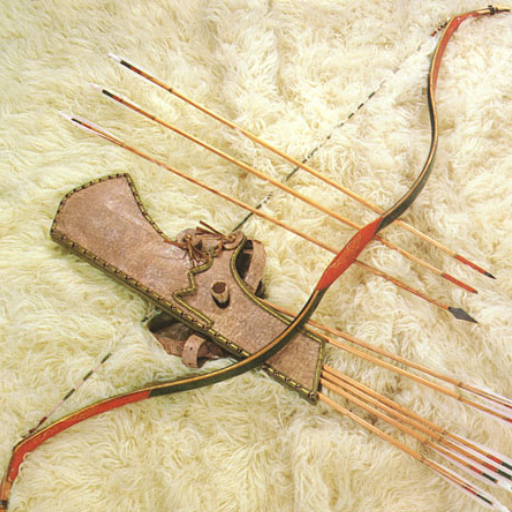
The recurve bow traces its origins back thousands of years, with early examples found in ancient civilizations such as those of Egypt, Mesopotamia, and Asia. Its distinctive curved tips were specifically designed to provide greater power and efficiency, making it an essential tool for both hunting and warfare. The bow’s compact design and strong performance made it particularly useful for mounted archers, such as the Scythians and Mongols, who relied on its portability and effectiveness in battle. This innovative design laid the foundation for its enduring presence in various cultures throughout history.
How did early civilizations develop recurve bows?
Early civilizations developed recurve bows through a combination of necessity, innovation, and the resources available in their environment. By leveraging materials such as wood, horn, and sinew, ancient bowyers created composite bows with distinctively curved limbs to increase power and accuracy. Techniques for crafting these bows often involved laminating layers of these materials using animal glue, allowing the recurve shape to store more energy than traditional straight-limbed bows. Civilizations such as the Egyptians, Assyrians, and later the Scythians and Mongols perfected these designs over centuries, using them for both hunting and warfare due to their compact size and superior performance. These advancements were passed down through trade and cultural exchanges, ensuring the enduring legacy of the recurve bow across diverse regions.
What role did recurve bows play in ancient warfare?
Recurve bows played a pivotal role in ancient warfare due to their power, range, and versatility. Their compact design made them ideal for mounted archers, allowing cavalry units to shoot accurately while remaining highly mobile on the battlefield. These bows delivered superior energy-efficiency, enabling archers to penetrate armor or deliver lethal strikes at longer distances compared to traditional bows. Civilizations like the Mongols, renowned for their masterful use of recurve bows, dominated vast territories through highly effective archery tactics. The recurve bow’s adaptability and performance made it a crucial weapon in shaping military strategies and outcomes across history.
How did the design of recurve bows evolve over time?
The history of recurve bows shows an effort to increase their power, efficiency, and portability over time. Early recurve bows, like those used by the Scythians and Mongols, were made from composite materials including wood, horn, and sinew. These materials provided flexibility as well as strength. Later, further improvements were made to enhance durability and reduce weight so that the bows were more reliable in combat and hunting. Fiberglass and carbon fiber, modern recurve bows incorporate high-performance materials, allow for maximum energy transfer and accuracy while requiring minimal maintenance. These advances, which still ensure the recurve bow serves the archery enthusiast around the world, blend traditional craftsmanship with contemporary engineering.
How has the recurve bow changed from traditional to modern designs?

Traditional recurve bows were typically crafted from natural materials such as wood, animal sinew, and horn, emphasizing handcrafted precision. Over time, advancements in material science introduced synthetic materials like fiberglass, carbon fiber, and aluminum, which improved the bow’s durability, flexibility, and efficiency. Modern designs often feature take-down models, allowing for easy disassembly and customization. These innovations have not only enhanced performance and reliability but also made recurve bows more accessible and versatile for a wide range of archers.
What materials are used in modern recurve bows?
Today’s recurve bows are built using materials that optimize their functionality, durability, and flexing ability. The limbs are constructed with layered composites containing fiberglass, carbon fibers, and wood, which is both flexible and strong. The handle or riser section is composed of light, yet durable and steady, alloys of aluminum, carbon, and magnesium. Some bows utilize carbon foam cores integrated within the limbs, which enhance speed and lessen vibrations experienced within the hands. These materials, regardless of an archer’s expertise, offer comfort, accuracy, and powerful force.
How do modern recurve bows differ from longbows?
Modern recurve bows and longbows differ significantly in design, efficiency, and usage. Recurve bows feature limbs that curve away from the archer at the tips, allowing greater energy storage and faster arrow speeds compared to the straight, simple design of longbows. This makes recurve bows better suited for activities like target archery or Olympic competitions, where precision and speed are crucial. Longbows, on the other hand, have a longer, more traditional structure that is favored for simplicity and historical reenactments. They are generally quieter when shot but require more strength to fully draw compared to recurve bows. Additionally, modern recurve bows often incorporate advanced materials and technologies, such as carbon and fiberglass, enabling customization and enhanced performance, while longbows maintain a classic, often handcrafted aesthetic.
What technological advancements have improved recurve bow performance?
Technological advancements have significantly enhanced recurve bow performance, focusing on materials and design. Modern recurve bows now utilize lightweight and durable materials like carbon fiber and aluminum, which improve stability and reduce vibration. Laminated limbs, often made with a combination of wood, fiberglass, and carbon composites, offer greater strength and flexibility for smoother, more powerful shots. Additionally, advancements in tuning options, such as adjustable limb pockets and precision-engineered risers, allow for better customization, improving accuracy and comfort for archers. These innovations have elevated the performance of recurve bows for both competitive and recreational use.
When did recurve bows become popular in competitive archery?
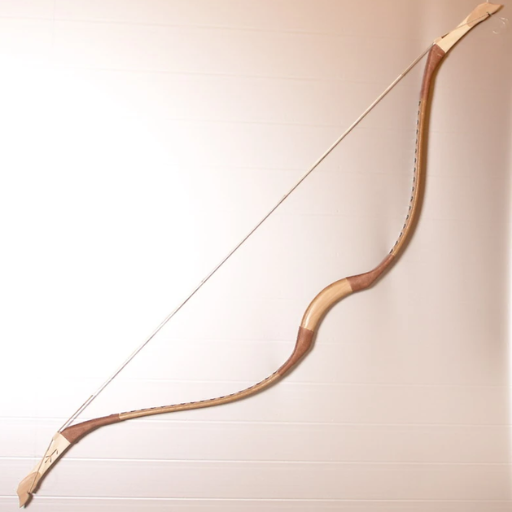
Recurve bows became popular in competitive archery during the mid-20th century, particularly after the 1972 Olympics when archery was reintroduced as a modern Olympic sport. Their balance of power, accuracy, and technological advancements made them the preferred choice for international competitions.
How did the introduction of recurve bows impact Olympic archery?
The introduction of recurve bows revolutionized Olympic archery by setting a new standard for precision and performance. Their design, which combines flexibility and strength, allowed archers to shoot with greater accuracy and consistency, leveling the playing field in international competitions. Additionally, the reintroduction of archery into the Olympics in 1972, paired with advancements in recurve bow technology, brought a surge of global interest and participation in the sport. This innovation also inspired standardized scoring systems and rules, shaping the modern, highly technical nature of Olympic archery.
What role does World Archery play in standardizing recurve bow competitions?
World Archery actively works to develop rules and regulations from scratch in a range of areas such as scoring, classification, or even equipment specifications to govern recurve bow competitions on a global scale. The governing body lacks uniformity through fairness and standardized competitions on a global level. At the same time, World Archery looks after the judge and official appointment processes to guarantee the unbiased maintenance of order during the matches. In the effort of achieving these goals, World Archery enables consistency across various competitions and national events, allowing for growth and accessibility of the sport without compromising its integrity.
What are the key components of a modern recurve bow?
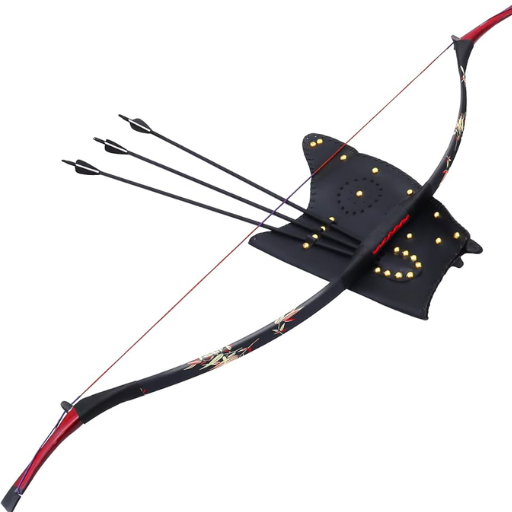
A modern recurve bow consists of several key components, each playing a vital role in its function and performance:
Riser – The central part of the bow, often made from aluminum or carbon, providing a sturdy grip and attachment points for other components.
Limbs – The flexible parts attached to the riser that store and release energy when the bow is drawn and released.
String – Connects the tips of the limbs and propels the arrow when released.
Arrow Rest – A small platform on the riser where the arrow rests before being shot.
Sight – An adjustable aiming device that improves accuracy.
Stabilizers – Rods attached to the riser to balance the bow and reduce vibrations during the shot.
These elements work together to ensure precision, power, and efficiency in archery.
How do the riser and limbs contribute to a recurve bow’s performance?
The riser and limbs are essential components of a recurve bow that directly affect its performance. The riser, typically made of durable and lightweight materials like aluminum or wood, provides a sturdy structure for mounting accessories such as sights, arrow rests, and stabilizers. Its ergonomic design ensures stability and proper hand placement, which are critical for consistent accuracy. The limbs, on the other hand, are responsible for storing and releasing energy. Made from layered composites or carbon materials, they allow for flexibility and durability. Their design creates the characteristic “recurve” shape, which increases the bow’s energy efficiency and power transfer, resulting in faster arrow speeds and improved shooting accuracy. Together, the riser and limbs define the bow’s balance, draw weight, and overall handling, making them pivotal in achieving high performance.
What types of bowstrings are used in modern recurve bows?
There are several types of bowstrings used in modern recurve bows, each offering distinct advantages based on material and construction. The most common materials include Dacron, Fast Flight, and modern synthetics like Dyneema. Dacron strings are durable, stretchy, and ideal for beginners or wooden bows, as they are forgiving and gentle on the limbs. Fast Flight and Dyneema, on the other hand, are low-stretch materials used in high-performance setups, offering greater speed, precision, and responsiveness. Bowstrings can also vary by strand count and serving, which influence the string’s strength, weight, and compatibility with arrow nocks. Choosing the right bowstring depends on the archer’s preferences, skill level, and the specific requirements of the bow.
How does the arrow rest affect accuracy in recurve archery?
The arrow rest plays a crucial role in determining accuracy in recurve archery by providing a stable platform for the arrow during the shot. A good arrow rest ensures consistent arrow positioning and minimizes interference as the arrow leaves the bow, directly impacting shot precision. Types of arrow rests, such as fixed rests or adjustable ones like stick-on or plunger-style rests, cater to different levels of archery experience. High-performance arrow rests often include added features, like micro-adjustments, which help fine-tune the arrow’s flight path. Properly aligning and tuning the arrow rest with the bow and arrow is essential for reducing inconsistencies, enhancing stability, and improving overall accuracy.
How does a recurve bow compare to other types of bows?
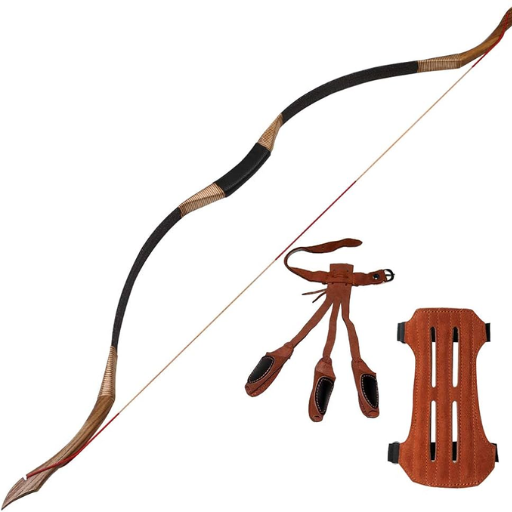
Compared to other types of bows, recurve bows are known for their simplicity, versatility, and ease of use. Unlike compound bows, which rely on cams and pulleys for mechanical advantage, recurve bows function purely through the archer’s strength, making them ideal for traditional archery and beginner practice. They are typically lighter and more portable than longbows or compound bows, allowing for easier transport and handling. While longbows offer a smoother draw, recurve bows deliver a faster and more powerful shot due to their distinct curved limb design. This makes them a popular choice for both target shooting and Olympic archery competitions.
What are the main differences between recurve and compound bows?
Recurve and compound bows differ significantly in their design, functionality, and purpose. Recurve bows, with their traditional, curved limb structure, rely solely on the archer’s strength for power. They are simpler in construction, making them lightweight and easier to maintain. These bows are ideal for beginners and traditional archers and are commonly used in sports like Olympic archery.
On the other hand, compound bows feature a modern design equipped with cams, pulleys, and cables to provide mechanical advantage. This system reduces the draw weight at full draw, allowing archers to hold and aim with less effort. Compound bows are generally more consistent, accurate, and powerful, making them suitable for hunters and competitive shooters. However, they are heavier and require regular maintenance due to the complexity of their components.
Ultimately, the choice between a recurve and compound bow depends on the intended use, the archer’s skill level, and personal preference.
How does the shooting technique differ between recurve and traditional bows?
When comparing the shooting techniques of recurve and traditional bows, the primary difference lies in the presence or absence of modern aids. Recurve bows often use accessories like sights, stabilizers, and clickers, which help improve accuracy and consistency. Archers using a recurve bow generally rely on a practiced anchor point and follow a more structured shooting routine, as seen in competitive archery.
Traditional bows, such as longbows, emphasize instinctive shooting without accessories. This technique requires the archer to focus on the target intuitively, adjusting for range and trajectory through muscle memory and practice. The shooting process is less mechanical and more reliant on natural feel and experience.
Both techniques demand proper grip, posture, and follow-through, but the level of precision and technological assistance varies significantly. Archers should choose a style that aligns with their goals and interests.
What should beginners know about recurve bow history and selection?
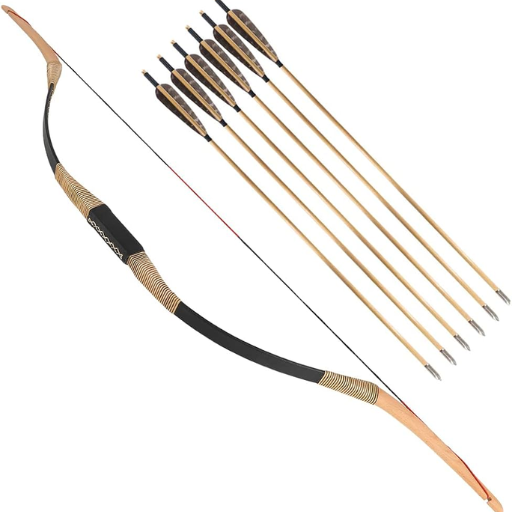
Recurve bows have a rich history, dating back thousands of years. They were used by ancient civilizations like the Mongols, Persians, and Egyptians for hunting, warfare, and sport due to their compact size and power. The distinctive curved design of the limbs allows the bow to store more energy, making it highly efficient and effective even at long ranges.
When selecting a recurve bow, beginners should consider factors like draw weight, bow size, and intended use. A lighter draw weight (20-30 pounds) is ideal for practice, ensuring comfort and control while building strength and technique. The bow’s length should correspond to the archer’s draw length; longer bows often provide better stability. It’s also important to choose a bow that suits your purpose, whether learning target archery or venturing into bowhunting. Trying different models and seeking guidance from experts or local archery shops can greatly aid in finding the right fit.
How can understanding recurve bow history help in choosing the right bow?
Understanding the history of recurve bows can provide valuable insights into their design, functionality, and purpose, helping you make an informed choice. Historically, recurve bows were designed for efficiency and mobility, as seen in their use by ancient civilizations like the Mongols and Persians in warfare and hunting. This historical context highlights their compact size and effectiveness, which are factors still relevant today. Knowing this, modern archers can prioritize features like portability and power depending on their intended use—whether for sport, hunting, or competitive archery. By understanding how past innovations have shaped modern designs, you can select a bow that aligns with your specific needs and preferences.
What factors should beginners consider when selecting their first recurve bow?
When choosing your first recurve bow, it’s essential to focus on several key factors to ensure a comfortable and effective start. First, consider the draw weight, which determines how much force is required to pull the bowstring. Beginners should select a lower draw weight, typically between 15-25 pounds, to develop proper form without strain. Next, bow size and draw length are critical; the bow should match your arm span and height to maintain accuracy and ease of use. Additionally, pay attention to the quality of materials. Look for durable yet lightweight options like wood, fiberglass, or composite risers and limbs. Another important aspect is whether the bow has takedown capability—a feature that allows the limbs to be removed for easy transport and future upgrades. Finally, test the bow for comfort and compatibility before purchasing, as a properly fitted bow boosts confidence and skill-building for new archers.
References
Frequently Asked Questions (FAQ)
Q: What defines the evolution of the recurve bows in archery history?
A: The evolution of the recurve bows is marked by changes in design, materials, and usage throughout history. Initially made of wood, recurve bows have evolved to incorporate modern materials such as aluminum or carbon fiber, enhancing their durability and performance.
Q: How does a recurve bow differ from a longbow?
A: A recurve bow is a type of archery bow that has tips curving away from the archer when unstrung, providing more power and speed than a traditional longbow, which has a simpler, straight design.
Q: What materials are modern recurve bows commonly made from?
A: Modern recurve bows are often constructed using materials like aluminum or carbon fiber, which provide strength and flexibility, unlike the traditional bows that were typically made of wood.
Q: How did the recurve bow become part of the Olympic Games?
A: The recurve bow is a type of archery bow used in Olympic competitions. Archery was introduced to the Olympic Games in the early 20th century, and the recurve bow, due to its advanced design and effectiveness, became the standardized choice for Olympic recurve events.
Q: What role did recurve bows play in Roman archery equipment?
A: In Roman archery equipment, the recurve bow was favored for its compact size and power, making it effective for both warfare and hunting. The design allowed for easier maneuverability compared to larger bows.
Q: Why is the bow handle an important part of a recurve bow?
A: The bow handle, or riser, is crucial as it provides the archer with a comfortable grip and stability, which are essential for accurate shooting. It also connects the bow limbs, which are critical for storing and releasing energy.
Q: What is the significance of the bow window in modern archery?
A: The bow window is an essential feature in modern recurve bows, allowing the arrow to be shot straight without being obstructed by the riser, enhancing accuracy and consistency in shooting.
Q: How does an unstrung recurve bow differ from one that is strung?
A: An unstrung recurve bow has its limbs relaxed and tips curving away, which reduces stress on the materials and prolongs the bow’s lifespan. When strung, the bow is ready for use, with the string attached to the bow limbs to store energy.
Q: What advancements have been made in archery equipment for field archery?
A: In field archery, advancements include the use of modern materials like carbon fiber for lighter, more durable equipment, and the development of more precise sights and stabilizers to improve shooting accuracy over varied terrain.
Q: What is a one-piece recurve bow, and how does it differ from other types?
A: A one-piece recurve bow is crafted from a single continuous piece, unlike takedown recurve bows that have detachable limbs. This design offers a traditional feel and often provides a smoother shooting experience.

Reasons Property Owners Need to a Certified Roofing Expert in Wilmington, North Carolina
Properties by the ocean, such as Wilmington, North Carolina, encounter specific issues when it comes to roof upkeep. Employing a professionally licensed roofer is essential for addressing these challenges and guaranteeing the lifespan of coverings.
Highlighted are multiple causes why homeowners ought to think about employing professional roofing services in Wilmington, North Carolina:
Reasons Real Estate Companies Would Hire a Certified Roofing Expert in Coastal NC
Residences near the shore, including Wilmington, NC, encounter specific issues when it comes to roof maintenance. Hiring a qualified roofing company is essential for addressing these challenges and guaranteeing the longevity of roofs.
Highlighted are some reasons why property owners must consider hiring professional roofing services in Wilmington, North Carolina:
Storm Harm Repair
Oceanfront properties often experience severe weather including storms, leading to significant damage to roofing systems. A certified expert can correctly determine and restore storm damage to avoid additional problems.
Ocean Atmosphere Oxidation Prevention
Saline atmosphere might result in corrosion of roofing materials, particularly steel roofs. Regular inspections by a qualified individual can identify initial indicators of corrosion and employ proactive solutions to extend the longevity of the roof.
Moisture Management and Seepage Fix
Seaside areas are subject to damp conditions, which may cause water accumulation beneath coverings, causing leaks and structural harm. A professional roofer can handle dampness issues efficiently and conduct required fixes to prevent further damage.
Adequate Airflow Installation
Proper roof ventilation is vital for preventing water retention and maintaining the quality of roof components. A qualified company can set up ventilation systems that suit the distinct conditions of seaside residences.
Material Knowledge and Advice
Certified experts possess thorough understanding of suitable options for oceanfront climates. They can suggest materials that are resistant to corrosion, moisture, and gust impacts, guaranteeing extended durability for roofs.
Knowing this information is important because it can save money over time. Proactive maintenance and prompt fixes can avoid expensive harm and prolong the lifespan of the roofing, maintaining the safety of the residence in a coastal area.
Seaside regions often knowledge severe weather like hurricanes, resulting in extensive harm to roofs. A certified expert can precisely evaluate and repair weather damage to avoid alternative problems.
Ocean Air Oxidation Avoidance
Saline atmosphere can cause corrosion of covering substances, really steel roofs. Regular inspections by an expert can detect initial indicators of oxidation and apply precautionary measures to extend the longevity of the covering.
Dampness Control and Drip Repair
Coastal regions experience high humidity, that might cause moisture buildup below roof surfaces, causing leaks and structural harm. A specialized roofer can manage moisture content effectively to necessary repairs to avoid further damage.
Proper Ventilation Setup
Sufficient covering ventilation is crucial for averting water retention and ensuring the quality of protecting components. A certifiable expert can set up air flow that match the specific criteria of resort homes.
Material Understanding plus Recommendations
Certified experts have substantial knowledge of suitable options for oceanfront climates. They could suggest options which can withstand rust, humidity, and storm effects, maintaining extended longevity for roofs.
Mastering this info is vital because it may possibly save bucks eventually. Preventative care and regular repairs can lessen really expensive injury and prolong the resilience of the covering, guaranteeing the security of the residence in a coastal area.
[url=https://portcityexteriors.com/roofing-castle-hayne-nc/]Detailed roof inspection services near by Wilmington North Carolina[/url]
[url=https://gadgetsansar.com/poco-mobile-price-in-nepal/#comment-4289]Vital Criteria for Selecting a Wilmington North Carolina Roofing Expert[/url] cfa30_8
[url=https://ourmind.ru//wp-content/news/filmu_pro_budushee__vzglyad_skvoz_prizmu_vremeni.html]https://ourmind.ru//wp-content/news/filmu_pro_budushee__vzglyad_skvoz_prizmu_vremeni.html[/url] что идет в кинотеатрах липецка
Рекомендуем – селектор казино сайт
Рекомендую – ремонт пластиковых окон в спб цена
купить рюкзак
[url=https://yarkompany.ru/language/pages/?volshebnue_skazki___okna_v_mir_chudes.html]https://yarkompany.ru/language/pages/?volshebnue_skazki___okna_v_mir_chudes.html[/url] смотреть бесплатно и в хорошем качестве фильмы
Сертификат происхождения СТ-1 подтверждает, что товар был произведен в определенной стране, что важно для таможенного оформления и применения тарифных преференций. Протокол испытания, в свою очередь, документирует результаты лабораторных исследований продукции, подтверждая соответствие определенным стандартам качества и безопасности. Сертификат соответствия на продукцию удостоверяет, что товар соответствует требованиям технических регламентов или национальных стандартов. Свидетельство о государственной регистрации продукции требуется для товаров, подлежащих санитарно-эпидемиологическому надзору, и подтверждает их безопасность для здоровья человека. Декларация ТР ТС – это документ, которым производитель или импортер подтверждает соответствие продукции требованиям технических регламентов Таможенного союза. Нотификация ФСБ требуется для ввоза или вывоза продукции, содержащей шифровальные (криптографические) средства. Декларация Минсвязи, в свою очередь, необходима для оборудования связи, подтверждая его соответствие установленным требованиям в сфере связи и телекоммуникаций. Все эти документы играют важную роль в обеспечении качества, безопасности и законности продукции, обращающейся на рынке. сертификат происхождения СТ-1
услуги брокера по таможенному оформлению [url=tamozhennyj-broker-moskva12.ru]услуги брокера по таможенному оформлению[/url] .
продвижение услуг компании сайт [url=http://www.prodvizhenie-sajtov-v-moskve216.ru]продвижение услуг компании сайт[/url] .
[url=https://school33-perm.ru/media/pgs/?hitu_amediateki.html]https://school33-perm.ru/media/pgs/?hitu_amediateki.html[/url] металлургический районный суд г челябинска официальный сайт решение суда
pinco kazino az [url=www.officialpinco.com]pinco kazino az[/url] .
таможня брокер [url=www.tamozhennyj-predstavitel-moskva12.ru/]таможня брокер[/url] .
бонусы без отыгрыша за регистрацию 1000 рублей за регистрацию вывод сразу
pinco cazino [url=http://www.pinco-casinopromoaz.com ]http://www.pinco-casinopromoaz.com [/url] .
[url=https://allboiler.ru/news/poznavatelnoe_kino__uchimsya__razvivaemsya_i_vdohnovlyaemsya.html]https://allboiler.ru/news/poznavatelnoe_kino__uchimsya__razvivaemsya_i_vdohnovlyaemsya.html[/url] любовь или деньги шоу смотреть онлайн
[url=https://clockfase.com/auth/elmn/?filmu_na_kinogo___luchshiy_vubor_dlya_lubiteley_kino.html]https://clockfase.com/auth/elmn/?filmu_na_kinogo___luchshiy_vubor_dlya_lubiteley_kino.html[/url] лучшие фильмы с высоким рейтингом зарубежные последних
Я считаю, что Вы не правы. Могу это доказать.
платформа позволяет начать с виртуального счёта, [url=https://oxyind.com/prostranstvo-dlja-investicij-i-torgovli-s-pocket/]https://oxyind.com/prostranstvo-dlja-investicij-i-torgovli-s-pocket/[/url] где новички получают 10 000 для учебы стратегий. Политика kyc (проверка личности при выводе средств).
рюкзак школьный
[url=https://taktikiipraktiki.ru/news/serialu_pro_derevnu__prostota__iskrennost_i_osobaya_atmosfera.html]https://taktikiipraktiki.ru/news/serialu_pro_derevnu__prostota__iskrennost_i_osobaya_atmosfera.html[/url] скачать фильмы через торрент бесплатно в хорошем качестве на телефон без регистрации
pinco casino [url=http://www.officialpinco.com]pinco casino[/url] .
carbofire scam: carbofire scam
neuroprime scam: neuroprime scam
arctic blast scam: arctic blast scam
neuroquiet scam: neuroquiet scam
Nagano Tonic scam: Nagano Tonic scam
Quietum Plus scam: Quietum Plus scam
I’m really impressed along with your writing talents as smartly as with the format in your blog. Is that this a paid topic or did you customize it yourself? Anyway keep up the excellent quality writing, it is rare to peer a nice blog like this one today!
Popular Types Used on Homes and Businesses by the Coast
Properties and businesses near the ocean, especially in locations like the Carolinas and Wilmington, NC, experience distinct weather challenges that impact the longevity and efficiency of roof types. Picking the proper substances can greatly impact the durability of coverings in these locations.
Composite Shingles
Bitumen shingles are a common option because of their affordability and ease of installation. Though, they are susceptible to storm effects and might be easily blown off during tempests. Furthermore, the saline atmosphere can lead to decay of the fragments on the tiles, shortening their longevity.
In order to demonstrate A landlord in the Carolinas observes that some bitumen shingles have been removed after a recent high wind event. The constant exposure to ocean breeze has furthermore resulted in fragment decay, necessitating frequent repairs.
Aluminum Roofing
Aluminum roofing is noted for its longevity and ability to resist extreme climates. This makes it a preferred choice for oceanfront properties. However, the ongoing exposure to saline atmosphere can cause oxidation, especially if the metal is not well-sealed. Regular maintenance is required to avert corrosion and extend its lifespan.
For the purpose of illustration A homeowner near the ocean in Wilmington, NC opts for steel roofing for their structure. After a period, they see signs of rust due to the salty air. Ongoing examinations and protection are needed to maintain the covering’s quality.
Terracotta and Cement Tiles
Clay and concrete tiles provide superior strength and can resist to saline atmosphere, turning them into a great option for seaside residences. However, they are weighty and demand a solid foundation. Moreover, they can be pricier relative to alternative substances and might break under pressure.
To illustrate An house owner near the coast selects ceramic tiles for their property. The materials endure the ocean breeze successfully, though after an extreme weather event, a few tiles crack and need repair, leading to additional costs.
Synthetic Roofing
Synthetic roofing options including rubber, polymer, or artificial blends are increasing in use due to their longevity and resilience to weather elements. They are often manufactured to imitate the appearance of authentic options, including slate, lumber, or ceramic. Still, the upfront expense might be greater than conventional options, and certain residents may have concerns about the artificial appearance.
For instance A property owner by the ocean selects synthetic roofing to obtain the look of slate without the bulk. The synthetic material shows resilience against salty air and severe conditions, but the primary expense is significant, requiring a longer time to regain by lower repair costs.
Picking the best options for residences and enterprises at the seaside is vital for ensuring durability and lowering repair charges in locations like NC.
[url=https://portcityexteriors.com/roofing-wilmington-nc/]Dependable roofing consultants close to Leland North Carolina[/url]
[url=https://www.reklameproducts.com/hello-world/#comment-81407]Pros and Cons of Various Roofing Substances[/url] 1db0a72
гарантия при продаже аккаунтов магазин аккаунтов
маркетплейс аккаунтов магазин аккаунтов социальных сетей
купить аккаунт магазин аккаунтов
аккаунт для рекламы биржа аккаунтов
профиль с подписчиками покупка аккаунтов
платформа для покупки аккаунтов аккаунты с балансом
магазин аккаунтов купить аккаунт с прокачкой
заработок на аккаунтах аккаунт для рекламы
маркетплейс аккаунтов соцсетей магазин аккаунтов
безопасная сделка аккаунтов услуги по продаже аккаунтов
маркетплейс аккаунтов магазин аккаунтов
маркетплейс аккаунтов https://magazin-akkauntov-online.ru
купить аккаунт аккаунты с балансом
покупка аккаунтов https://prodat-akkaunt-online.ru/
услуги по продаже аккаунтов купить аккаунт
маркетплейс аккаунтов соцсетей https://pokupka-akkauntov-online.ru/
Account Trading Service Guaranteed Accounts
Account Trading Service Account Buying Service
Account Exchange Service Sell Account
Ready-Made Accounts for Sale Buy and Sell Accounts
Buy Account Buy Pre-made Account
Purchase Ready-Made Accounts Account Store
Secure Account Purchasing Platform Gaming account marketplace
Secure Account Sales Account Purchase
Buy and Sell Accounts Account Catalog
Account Purchase Gaming account marketplace
account selling platform account trading
find accounts for sale database of accounts for sale
account trading platform purchase ready-made accounts
secure account sales marketplace for ready-made accounts
account trading service account trading platform
secure account purchasing platform accounts market
buy accounts profitable account sales
account trading account trading platform
account trading website for buying accounts
accounts marketplace buy pre-made account
purchase ready-made accounts sell account
account trading accounts market
sell pre-made account https://social-accounts.org/
find accounts for sale gaming account marketplace
accounts marketplace https://accounts-for-sale.org
database of accounts for sale accounts market
account sale account exchange service
account sale buy accounts
accounts market find accounts for sale
account store account purchase
account marketplace find accounts for sale
website for selling accounts account sale
account buying service buy account
gaming account marketplace account market
sell accounts account trading service
account store verified accounts for sale
secure account purchasing platform find accounts for sale
accounts marketplace https://accounts-offer.org
account buying platform https://accounts-marketplace.xyz/
purchase ready-made accounts https://social-accounts-marketplaces.live/
gaming account marketplace https://accounts-marketplace.live
buy and sell accounts accounts marketplace
account purchase https://buy-accounts.space
buy pre-made account buy accounts
buy pre-made account https://buy-accounts.live
account trading platform https://accounts-marketplace.online
account buying service https://social-accounts-marketplace.live
buy pre-made account https://accounts-marketplace-best.pro/
магазин аккаунтов https://akkaunty-na-prodazhu.pro/
маркетплейс аккаунтов соцсетей rynok-akkauntov.top
покупка аккаунтов kupit-akkaunt.xyz
покупка аккаунтов akkaunt-magazin.online
маркетплейс аккаунтов соцсетей https://akkaunty-market.live
купить аккаунт магазины аккаунтов
маркетплейс аккаунтов https://akkaunty-optom.live
маркетплейс аккаунтов соцсетей online-akkaunty-magazin.xyz
биржа аккаунтов https://akkaunty-dlya-prodazhi.pro/
биржа аккаунтов kupit-akkaunt.online
buy aged fb account https://buy-adsaccounts.work/
buy fb ads account https://buy-ad-accounts.click
buy facebook accounts for ads https://buy-ad-account.top/
buy fb account buy facebook accounts
buy account facebook ads facebook accounts for sale
buy accounts facebook buy facebook profile
buy aged facebook ads account https://ad-account-for-sale.top
Предлагаем вашему вниманию интересную справочную статью, в которой собраны ключевые моменты и нюансы по актуальным вопросам. Эта информация будет полезна как для профессионалов, так и для тех, кто только начинает изучать тему. Узнайте ответы на важные вопросы и расширьте свои знания!
Детальнее – https://medalkoblog.ru/
facebook ads account for sale https://buy-ad-account.click
buy a facebook account https://ad-accounts-for-sale.work
google ads accounts for sale old google ads account for sale
buy google ads agency account https://buy-ads-accounts.click
facebook ad account buy https://buy-accounts.click
google ads accounts for sale https://ads-account-for-sale.top
old google ads account for sale https://ads-account-buy.work
buy verified google ads account https://buy-ads-invoice-account.top
old google ads account for sale https://buy-account-ads.work
sell google ads account https://buy-ads-agency-account.top
adwords account for sale https://sell-ads-account.click
buy google ad account buy old google ads account
facebook bm account buy https://buy-business-manager.org
buy google ads threshold accounts old google ads account for sale
buy facebook bm account buy-bm-account.org
buy fb bm https://buy-verified-business-manager-account.org/
fb bussiness manager https://buy-verified-business-manager.org
buy verified facebook business manager https://buy-business-manager-acc.org
buy business manager account https://business-manager-for-sale.org/
facebook business manager buy https://buy-business-manager-verified.org/
verified bm buy-bm.org
unlimited bm facebook buy facebook bm
buy facebook business manager accounts https://buy-business-manager-accounts.org/
tiktok ad accounts https://buy-tiktok-ads-account.org
buy tiktok ads account https://tiktok-ads-account-buy.org
buy tiktok ad account https://tiktok-ads-account-for-sale.org
buy tiktok ads account https://tiktok-agency-account-for-sale.org
buy tiktok ad account https://buy-tiktok-ad-account.org
tiktok agency account for sale https://buy-tiktok-ads-accounts.org
tiktok ads agency account https://tiktok-ads-agency-account.org
tiktok ads account buy https://buy-tiktok-business-account.org
buy tiktok ads accounts https://buy-tiktok-ads.org
Can you be more specific about the content of your article? After reading it, I still have some doubts. Hope you can help me.
Your point of view caught my eye and was very interesting. Thanks. I have a question for you.
Thank you for your sharing. I am worried that I lack creative ideas. It is your article that makes me full of hope. Thank you. But, I have a question, can you help me?
[url=https://joyorganics.com/pages/wholesale-cbd ]cbd distributors[/url] are a helpful and enjoyable way to win cannabidiol without the high. Numberless people use them to quiet stress, repair forty winks, or support inclusive wellness. The effects mainly begin within 30–60 minutes and can last owing several hours. You’ll find options with melatonin, vitamins, vegan ingredients, or no added sugar. They come in a range of flavors and strengths. It’s in the most suitable way to start with a low quantity and everlastingly check for third-party lab testing to secure calibre and safety.
buy facebook ad account secure account purchasing platform account trading service
buy a facebook account account catalog sell accounts
I don’t think the title of your article matches the content lol. Just kidding, mainly because I had some doubts after reading the article.
https://joyorganics.com/collections/delta-9-gummies are a convenient and enjoyable temperament to seize cannabidiol without the high. Multifarious people make use of them to further stress and strain, emend drop, or in complete wellness. The effects most often upon within 30–60 minutes and can mould championing several hours. You’ll gather up options with melatonin, vitamins, vegan ingredients, or no added sugar. They turn out in a assortment of flavors and strengths. It’s finery to start with a critical dose and every time confirm for third-party lab testing to guarantee quality and safety.
https://t.me/s/TgGo1WIN/17
Официальный Telegram канал 1win Casinо. Казинo и ставки от 1вин. Фриспины, актуальное зеркало официального сайта 1 win. Регистрируйся в ван вин, соверши вход в один вин, получай бонус используя промокод и начните играть на реальные деньги.
https://t.me/s/Official_1win_kanal/1761
Официальный Telegram канал 1win Casinо. Казинo и ставки от 1вин. Фриспины, актуальное зеркало официального сайта 1 win. Регистрируйся в ван вин, соверши вход в один вин, получай бонус используя промокод и начните играть на реальные деньги.
https://t.me/s/Official_1win_kanal/4831
Официальный Telegram канал 1win Casinо. Казинo и ставки от 1вин. Фриспины, актуальное зеркало официального сайта 1 win. Регистрируйся в ван вин, соверши вход в один вин, получай бонус используя промокод и начните играть на реальные деньги.
https://t.me/s/Official_1win_kanal/521
Your article helped me a lot, is there any more related content? Thanks! https://www.binance.info/lv/register-person?ref=B4EPR6J0
Your article helped me a lot, is there any more related content? Thanks!
Your point of view caught my eye and was very interesting. Thanks. I have a question for you. https://www.binance.info/en-ZA/register-person?ref=JHQQKNKN
Can you be more specific about the content of your article? After reading it, I still have some doubts. Hope you can help me.
Your article helped me a lot, is there any more related content? Thanks!
Thank you for your sharing. I am worried that I lack creative ideas. It is your article that makes me full of hope. Thank you. But, I have a question, can you help me?
Эта информационная заметка содержит увлекательные сведения, которые могут вас удивить! Мы собрали интересные факты, которые сделают вашу жизнь ярче и полнее. Узнайте нечто новое о привычных аспектах повседневности и откройте для себя удивительный мир информации.
Ознакомиться с деталями – https://quick-vyvod-iz-zapoya-1.ru/
Can you be more specific about the content of your article? After reading it, I still have some doubts. Hope you can help me.